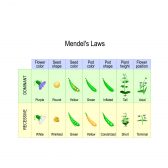Table of Contents
Definition
noun
plural: sorbitols
sor·bi·tol, ˈsɔr bɪˌtɔl
A sugar alcohol with a sweet taste, occurs naturally in vegetables and fruits of certain plants (e.g. apples, pears, prunes, pears), and manufactured chemically via reduction of glucose, for use chiefly as a low-calorie sweetener and emulsifier
Details
Overview
Sorbitol is one of the sugar alcohols. Sugar alcohols belong to a class of polyols characterized by being white, water-soluble, organic compounds with a general chemical formula of (CHOH)nH2. Sugar alcohols may be produced by the hydrogenation of sugars.
History
Sorbitol is first discovered in the berries of the mountain ash in 1872.1 It was isolated and coined by the French chemist Joseph Boussingault. 2 Today, it is produced chemically by hydrogenating glucose. Corn is the typical source of starch that is processed by breaking it down into simple sugar components (i.e. glucose). Hydrogen is added to glucose to convert it into sorbitol with the help of a metal catalyst. Its use in the food industry has been affirmed as generally safe by the U.S. Food and Drug Administration. Several other countries as well (e.g. Canada, Japan, and Australia) approved the use of sorbitol as an ingredient in various food and beverages. 1
Properties
Sorbitol is the polyol corresponding to glucose. It can be produced by the reduction of glucose. Its chemical formula is C6H14O6, same as that of mannitol (another sugar alcohol). Thus, sorbitol is an isomer of mannitol. Their structural difference is the orientation of the hydroxyl group on Carbon-2. They also have different melting points. The melting point of sorbitol is at 94–96 °C whereas that of mannitol is at 166-168 °C. Both of them occur naturally in plants. They are also produced chemically. However, they are used as alternative sweetening agents but they are used differently in medicine. As a treatment, mannitol is used chiefly as a diuretic whereas sorbitol is used largely as a laxative. Since sorbitol has a sweetish taste it is used as an alternative to sucrose (table sugar). Sorbitol is less sweet than sucrose. It has about 60% sweetness relative to sucrose. Aside from that, it also has a lower glycemic index (which is 9) than sucrose (which has a glycemic index of 65).
Biological activities
Biological activities
Sorbitol may be biosynthesized via a glucose reduction reaction wherein the aldehyde group is converted into a hydroxyl group. The reactions uses cofactor NADH and the enzyme that catalyzes it is aldose reductase.
Biological activities
The polyol pathway is a biological process wherein glucose is converted into fructose. It is called polyol because glucose is first reduced to a polyol sorbitol. It is a two-step process. The first step is as described above: the biosynthesis of sorbitol via glucose reduction reaction catalyzed by aldose reductase and the use of NADH. The second step is the oxidation of sorbitol to fructose. The enzyme that catalyzes the reaction is sorbitol dehydrogenase and another cofactor, NAD+, is used in this step.
This pathway is implicated in type-II diabetes complications, such as microvascular damage to insulin-independent cells of kidney, retina, and nerves.3 Glucose that has not been phosphorylated by the enzyme hexokinase for glycolytic pathway normally enters the polyol pathway to be converted into fructose. However, when there is a large amount of excess glucose, such as in diabetic conditions, the hexokinase becomes saturated with the overwhelming amount of glucose, and consequently, glucose is reduced to sorbitol by aldose reductase instead. Since more NADPH and NAD+ are used in the polyol pathway, they become less available for other important metabolic activities, e.g. glutathione and nitric oxide production. It also leads to increased reactive oxygen species, which can be damaging to cells.
Biological activities
Sorbitol is present naturally but in small amounts in certain fruits. It is also produced chemically for use as a sweetening agent. In humans, the absorption of sorbitol by the small intestine occurs at a relatively slower rate than sugars. When absorbed, it is released into the bloodstream and then taken up especially by the liver cells. Sorbitol, to be metabolized, is converted into fructose by hepatic polyol dehydrogenase.4 Sorbitol that has not been absorbed in the small intestine will reach the colon where it will be metabolized by the residing bacteria. Too much sorbitol could, therefore, promote increased fermentation reactions, and as such metabolic byproducts (e.g. hydrogen gas) produced by the colonic flora will also increase. This brings about abdominal pain, bloating, and flatulence. Diarrhea ensues since sorbitol draws water and retains it in the large intestine through osmotic pressure.
Health risks
Sorbitol is generally recognized as safe (GRAS) and has the acceptable daily intake not specified status. However, consumption of sorbitol could be a health risk to certain individuals. Since sorbitol is slowly metabolized by the body and poorly absorbed by the small intestine, it is not recommended for consumption by individuals with sorbitol sensitivity, fructose intolerance, or irritable bowel syndrome. Fructose intolerants cannot properly metabolize fructose. And since sorbitol is immediately converted into fructose via the polyol pathway, they should avoid not just foods laden with fructose but also those containing sorbitol. Too much sorbitol could become a health risk when it is ingested in excess. It can trigger mild to severe diarrhea and abdominal pain.
Biological importance
Sorbitol serves as a substrate in the polyol pathway where unused glucose is reduced into sorbitol, which in turn, is oxidized to produce fructose. Fructose is an essential monosaccharide since it is used in certain metabolic activities of the cell, such as fructolysis and glycation. However, the conversion of glucose to fructose via the polyol pathway does not always occur under normal conditions. It occurs when there is an overwhelming amount of glucose, just as it is in diabetic individuals.
Dietary sorbitol occurs naturally in some plants, such as apples, pears, peaches, prunes, berries, etc. It may also be produced chemically to be used as an alternative sweetening agent in certain foods and drinks (such as in candies, cookies, puddings, oatmeal, etc.). Consumption of sorbitol, though, leads to only partial digestion and absorption in the small intestine. Unabsorbed sorbitol moves to the large intestine where it is fermented by gastrointestinal flora and produce short-chain fatty acids that the gut flora and the body can use as energy fuel.
Sorbitol is less sweet than sucrose, i.e. about 60% as sweet as sucrose. The dietary energy it provides is 2.6 kilocalories per gram, which is also less than sucrose provides (about 4 kilocalories per gram). Thus, foods with sorbitol as sugar substitute are labeled as “low-calorie”, “sugar-free”, or “diet”, such as in drinks, ice cream, mints, chewing gum, etc. Another advantage of sorbitol over sucrose and other sugars is its relatively lower glycemic index (GI), which is 9, in contrast to sucrose that has GI of 65. Glucose has GI of 100 and fructose has 25. A high GI means that it can raise blood glucose levels. A consistently high blood glucose level is implicated in diabetes mellitus and obesity.
Sorbitol, just as the other sugar alcohols, gives the advantage of not promoting tooth decay. Sugar alcohols are not usually fermented or metabolized by oral bacteria, and therefore are not converted into acids or other byproducts that contribute to tooth decay. Thus, they are used in the production of toothpastes, lozenges, and medicinal syrups. Sorbitol is not often fermented by most bacteria in the mouth. However, Streptococcus mutanscan metabolize it, although slowly. Thus, sorbitol may still cause tooth decay unlike other sugar alcohols like xylitol and isomalt that essentially do not.
Sorbitol may also be used as a laxative. Since it attracts and retains water, it promotes evacuation of bowels. The presence of sorbitol in prunes contributes to the fruit’s laxative effects. As a laxative, sorbitol can be given either orally or rectally.
Sorbitol is also used as a growth substrate in some tests for bacteria and is sometimes used to maintain the tonicity of low ionic strength media.
Supplementary
Etymology
- Latin sorbus (“service tree”) + –itol (referring to polyhydric alcohols)
IUPAC
Chemical formula
- C6H14O6
Synonym(s)
Derived term(s)
- Sorbitol pathway
- Sorbitol permease
Further reading
See also
- sugar alcohol
- polyol pathway
Reference
- Sorbitol. (2015, October 22). Retrieved from ://caloriecontrol.org/sorbitol/ Link
- Nabors, L. (2001). Alternative sweeteners. New York: M. Dekker. p.317
- Jedziniak, J. A., Chylack, L.T., Cheng, H.M., Gillis, M.K., Kalustian, A.A., & Tung, W.H. (1981). “The sorbitol pathway in the human lens: aldose reductase and polyol dehydrogenase”. Investigative Ophthalmology & Visual Science, 20 (3): 314–26.
- Marie, S. & Piggott, J. (1991). Handbook of sweeteners. Glasgow England: Blackie Avi. p.97
© Biology Online. Content provided and moderated by Biology Online Editors







